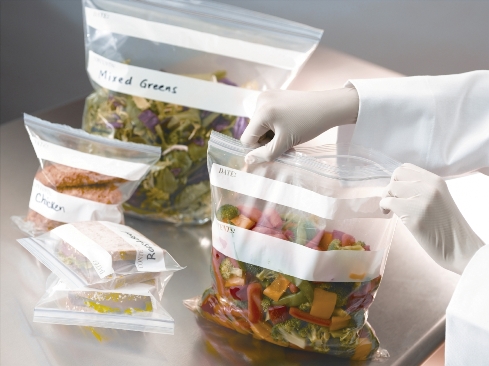Hand sinks: Often Taken for Granted, but an Essential Part to Effective Hand Hygiene
Late in January, I received a question about hand sinks in a foodservice operation. The question pertained to school staff (teachers and aides) who were using a hand washing sink in the school kitchen. The question came as a matter of who was allowed access to the kitchen to use the sink, but the question itself caused me to go down a rabbit hole of requirements for hand washing sinks in foodservice operations.
Hand sinks are, perhaps, taken for granted by many managers, supervisors, and employees in foodservice operations when it comes to reviewing hand washing effectiveness. They are easy to take for granted, until they are not working. Even in these blogs, we’ve focused on the correct procedure for washing your hands, when to wash hands, and hand washing supplies, but we don’t often focus on the hand sink.
The FDA Model Food Code states at least one hand sink should be available to employees. Further recommendations are that the sink should be convenient for employees who participate in food preparation, dispensing, and ware washing and there should be a hand sink immediately adjacent to restrooms.
…employees are more likely to wash their hands if the operation has more than one handwashing sink and/or a sink is located within the sight of the employee.
Our previous research has found that one big barrier to employees washing their hands is how convenient the sink is to their work area. Remember that your definition of convenient and your employees may very well differ. I once had one of my employees tell me that he can’t wash his hands as many times as he would need to by “the code”, simply because it takes too much time, and we expected him to get food out to our guests in a timely manner. Even though our management team thought that both hand washing sinks in the kitchen were convenient for all of our employees, employee perception didn’t agree – and it was the employees’ perception that really mattered as they were the ones working in that area 40 hours a week.
Other research in the field has also found employees are more likely to wash their hands if the operation has more than one hand washing sink and/or a sink is located within the sight of the employee. So how many is enough in your operation? The food code doesn’t give a straight answer to that question because it really does depend on your business. For a small-scale, limited production kitchen, one sink may very well be enough. However, for larger operations with complex food production, many sinks would be desired and recommended.
Solid recommendations on the number of sinks required are difficult to come by. Foodservice Equipment and Supplies Magazine noted that you should allow one hand sink for every five employees working in your kitchen at a time. Further, they noted that one hand sink should be planned for every 300 square feet of kitchen space, and one hand sink for each foodservice preparation and/or cooking area. These recommendations align with research in the area and would certainly mean that the hand washing sink is convenient and in view of each employee in the production area.
While this is great information to have, many who are reading this are likely dealing with kitchens that are already built and unable to easily renovate spaces to accommodate more hand washing sinks. In this case, it is imperative that we try to reinforce the importance of hand washing with our employees and remove any barriers they may have to washing their hands. Only then will employees start to change their behaviors and improve hand washing compliance.
Later this month, be on the lookout for the SafeBites Webinar Series announcements for 2023. We have an exciting set of webinars that we are planning this year. In the meantime, if you have any food safety questions, we are a quick email away and would be happy to assist. Risk Nothing.
READ MORE POSTS
Routes of Foodborne Illness & Germs
From your sniffling coworker to the raw chicken on your kitchen cutting board, everyday life is full of potential infectious hazards. With germs so common and seemingly everywhere, knowing how germs spread is vital to preventing infection and foodborne illness. There are seven possible ways for the transmission of bacteria and viruses to take place. Although some of these microorganisms in our environment are good for us and protect us, disease causing pathogens are the germs or bad guys.
Handling Leafy Green Salad
We have had several produce outbreaks of foodborne disease from our lettuce, spinach, and other greens in the last several years that have been devastating to the produce growers and distributors, retail grocery stores, restaurants, and consumers.
Food Packaging Safety in a Vacuum
Extending the shelf life of fresh foods has come a long way in the food industry since curing meats with salt and sugar or canning vegetables with heat processing. The food service and consumer markets needed some better visual packages to draw the eye to the freshness factor and the technology of food packaging has filled our dinner plate. Vacuum packaging and modified atmosphere packaging, shortened to “MAP”, are the terms used for the method of food packaging used every time we choose convenience over more complex scratch meal preparation. According to industry statistics, billions of packages of vacuum and MAP-packaged foods flood the marketplace today. In both modified-atmosphere and vacuum packaging, food is packaged in a pouch made of barrier film.
The Eleven Commandments of Food Safety at Your Restaurant
Lists help us remember all kinds of information. Given the list of recent national foodborne outbreaks in the news, keep repeating this list to your food service team. They are kind of like “commandments”. As a professional in a food service facility we should think of the very basic food safety concepts that every crew member should aspire to learn, even though this list may have different priorities based on your menu. The first 3 apply to anyone who serves food, from a bag of popcorn to a full course meal. As chefs or managers, if we can “set the example” by repeating good food safety practices visibly to the crew, it will help them understand how important it is to the success of your facility. Thou shalt:










